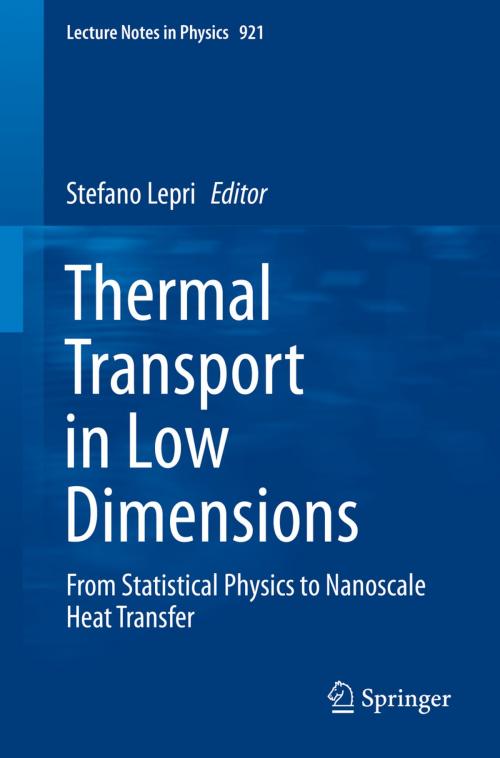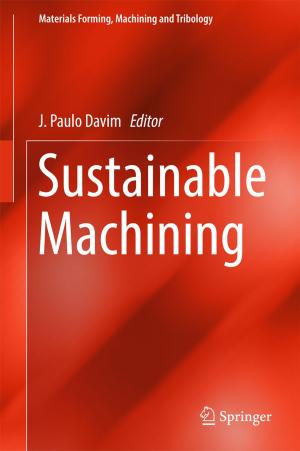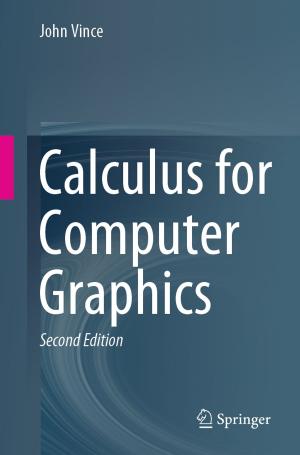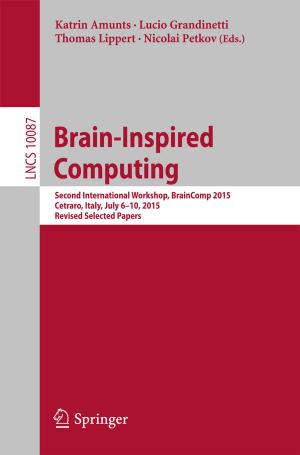Thermal Transport in Low Dimensions
From Statistical Physics to Nanoscale Heat Transfer
Nonfiction, Science & Nature, Technology, Nanotechnology, Science, Physics, General Physics| Author: | ISBN: | 9783319292618 | |
| Publisher: | Springer International Publishing | Publication: | April 7, 2016 |
| Imprint: | Springer | Language: | English |
| Author: | |
| ISBN: | 9783319292618 |
| Publisher: | Springer International Publishing |
| Publication: | April 7, 2016 |
| Imprint: | Springer |
| Language: | English |
Understanding non-equilibrium properties of classical and quantum many-particle systems is one of the goals of contemporary statistical mechanics. Besides its own interest for the theoretical foundations of irreversible thermodynamics(e.g. of the Fourier's law of heat conduction), this topic is also relevant to develop innovative ideas for nanoscale thermal management with possible future applications to nanotechnologies and effective energetic resources.
The first part of the volume (Chapters 1-6) describes the basic models, the phenomenology and the various theoretical approaches to understand heat transport in low-dimensional lattices (1D e 2D). The methods described will include equilibrium and nonequilibrium molecular dynamics simulations, hydrodynamic and kinetic approaches and the solution of stochastic models.
The second part (Chapters 7-10) deals with applications to nano and microscale heat transfer, as for instance phononic transport in carbon-based nanomaterials, including the prominent case of nanotubes and graphene. Possible future developments on heat flow control and thermoelectric energy conversion will be outlined.
This volume aims at being the first step for graduate students and researchers entering the field as well as a reference for the community of scientists that, from different backgrounds (theoretical physics, mathematics, material sciences and engineering), has grown in the recent years around those themes.
Understanding non-equilibrium properties of classical and quantum many-particle systems is one of the goals of contemporary statistical mechanics. Besides its own interest for the theoretical foundations of irreversible thermodynamics(e.g. of the Fourier's law of heat conduction), this topic is also relevant to develop innovative ideas for nanoscale thermal management with possible future applications to nanotechnologies and effective energetic resources.
The first part of the volume (Chapters 1-6) describes the basic models, the phenomenology and the various theoretical approaches to understand heat transport in low-dimensional lattices (1D e 2D). The methods described will include equilibrium and nonequilibrium molecular dynamics simulations, hydrodynamic and kinetic approaches and the solution of stochastic models.
The second part (Chapters 7-10) deals with applications to nano and microscale heat transfer, as for instance phononic transport in carbon-based nanomaterials, including the prominent case of nanotubes and graphene. Possible future developments on heat flow control and thermoelectric energy conversion will be outlined.
This volume aims at being the first step for graduate students and researchers entering the field as well as a reference for the community of scientists that, from different backgrounds (theoretical physics, mathematics, material sciences and engineering), has grown in the recent years around those themes.















